How to write mathematical formulas in Word very easily
There are 6 most popular ways to insert mathematical formulas in Word: MathMagic, MathCast, Equation, Ink Equation and Math Type. With Word's built-in math formula writing tool, Equation, you can insert the most common math formulas. Ink Equation helps write formulas faster, and if you need complex and diverse symbols, MathType is your choice.
MathType can be used on office tools, helping users quickly edit mathematical content, with a fully supported character set. Below are instructions for writing mathematical formulas in Word using the 7 TipsMake tools introduced above. Please follow along.
Insert mathematical formula with Equation
Word (2007 and above) new version has a built-in Equation mathematical formula editor with full tools for you to write mathematical formulas from simple to complex. Just follow the instructions below to learn how to write mathematical formulas:
Step 1: Go to the Insert tab , look at the bottom of the menu bar on the right, click the arrow on the Equation button .


Step 2: Select and click on the mathematical formula template that matches the formula you want to insert, drag the slider down to see more formula templates.

Step 3: The formula will appear in the document. If you need to edit any parameter, click on it, or use the corresponding arrow keys to move to the position that needs editing:


Step 4: If there is no existing formula in Equation, do not click the arrow next to Equation anymore but click directly on Equation. At this time, the Design tab will appear with many mathematical symbols to customize and insert into the document:
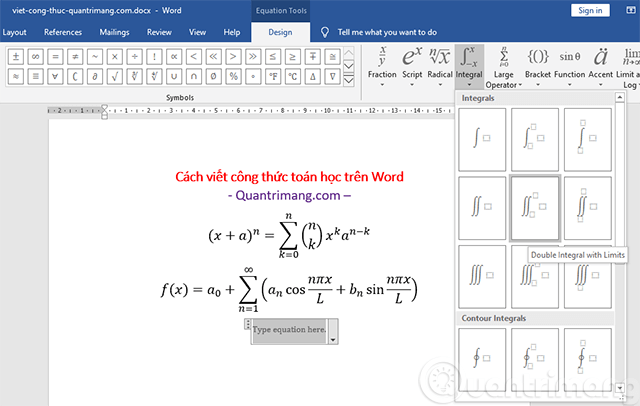
Use Ink Equation to write mathematical formulas in Word
If the above method is too time-consuming when you have to insert many formulas, you can use Ink Equation, especially convenient if you have a touch screen and a specialized pen for touch screens, otherwise use it skillfully. The mouse is still very good.
You also go to Insert > click the down arrow next to Equation > Ink Equation :
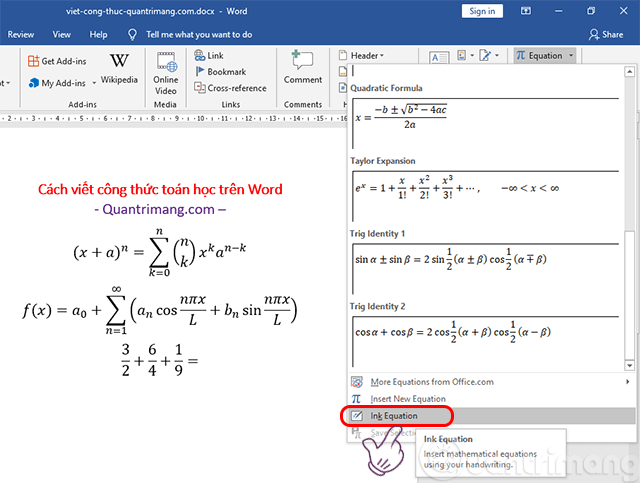
The formula writing window appears, you use a pen or mouse to click and write on the screen, the formula is immediately translated into Equation format. If it is not correct, you need to rewrite the strokes to make them neat. If you write incorrectly, click Erase to delete the mistake. As in the example below, I am writing fractions in Word:
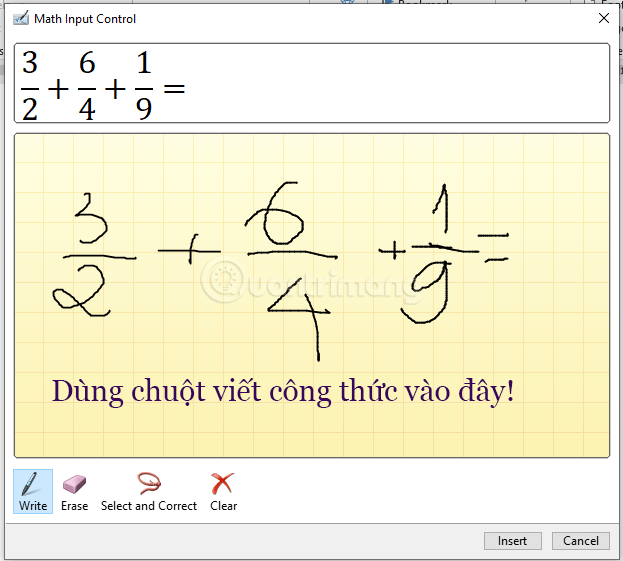
After finishing writing, click Insert , the math formula you wrote will be inserted into Word:

How to use MathType on Word
Step 1:
You download and install MathType, then access the MathType data folder on the system. If you install MathType for Windows 64bit, access the path C:Program Files (x86)MathType . If it is a 32bit MathType version, replace it with Program file.
After accessing the MathType folder, select MathPage.
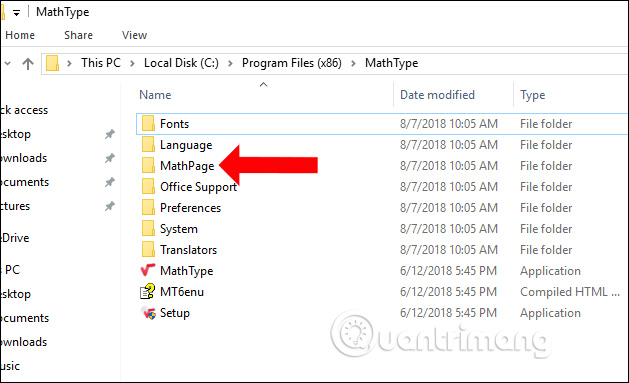
Step 2:
In the next interface, click on folder 64 .
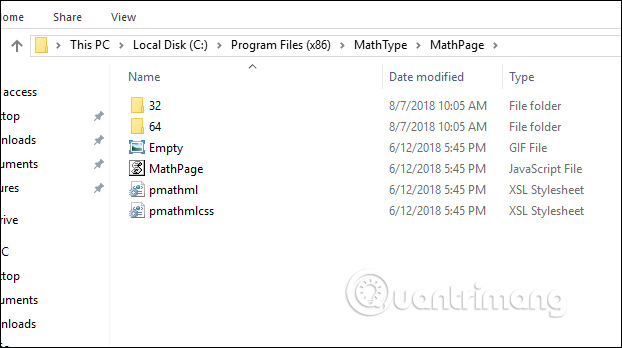
In this folder, users will see the MathPage.wll file . Click copy to copy this folder. If necessary, you can copy the folder path of the MathPage.wll file to Notepad to find the file more easily.

Step 3:
Find the Office suite installation folder on your computer. If you install the 32bit version of Office, go to C: Program FilesMicrosoft Office. If running the 64bit version of Office, access C: Program Files(x86)Microsoft Office.
Here you will see an Office 12 folder. The folder name will depend on the version being installed, it could be Office14 if using Word 2010.
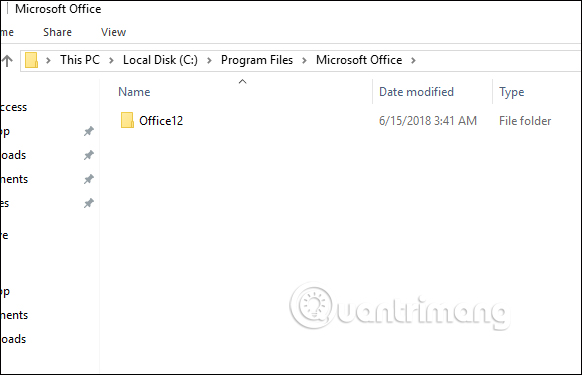
Step 4:
Please paste the MathPage.wll file into this Office12 folder . So you have successfully added MathType to the interface on Word.
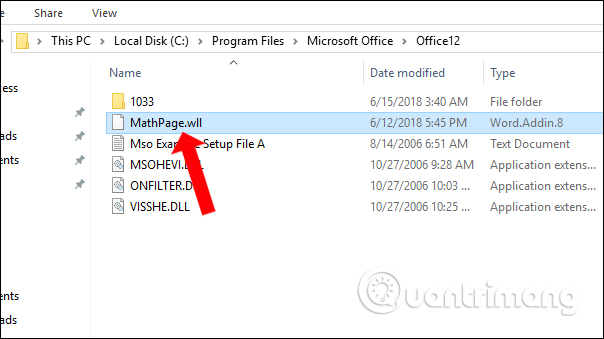
Step 5:
Open the Word interface and you will see the MathType section appear on the interface's menu bar.
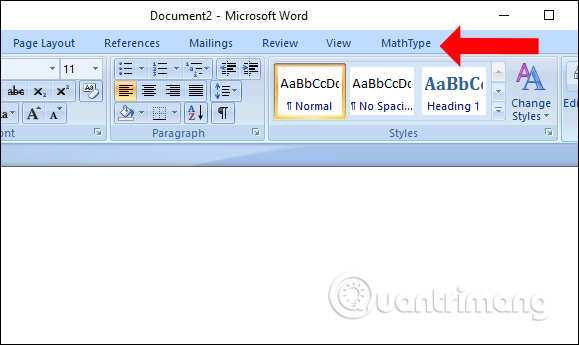
Click MathType and then click on Inline below. Immediately the MathType interface displays.
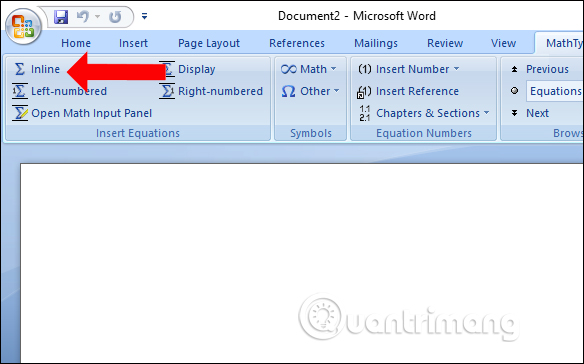
Step 6:
Let's write the formula we want to use in Word, highlight it and select Copy .
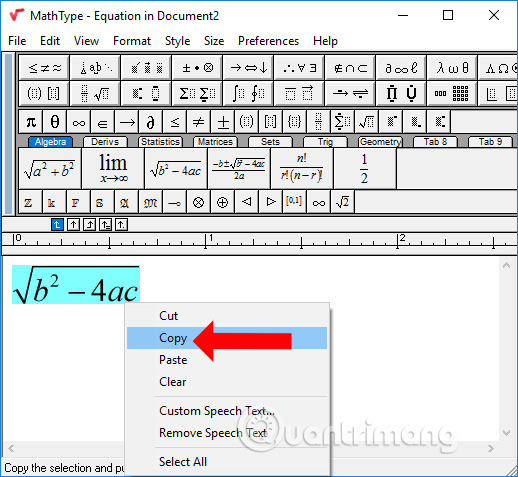
Paste the formula or expression into the Word interface and you will see the formula appear.
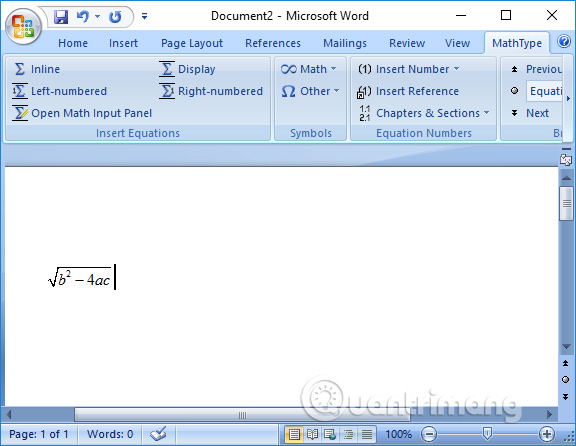
MathType and Word will operate completely independently of each other, without affecting each other when performing operations on these two tools. The types of equations and expressions that MathType helps you edit will be richer than the math formula input feature available on Word.
How to use MathMagic on Word
The tool comes with an easy-to-use interface with WYSIWYG editing capabilities, customizable features, and allows creating many types of complex equations and formulas.
Available in 4 different editions (MathMagic Lite, Personal Edition, Pro Edition and Prime Edition) for use with different operating systems and Office programs. The article will take Pro Edition 8.72 as an example.
With MathMagic, you can write beautiful equations and symbols easily and quickly. It is also designed for use with any word processor, DTP layout software, presentation software, and/or graphics software. The generated equations can be used via drag and drop, copy and paste, or export and import tools.
The Pro version has its own plugins or extensions, so you can write or edit equations inside an InDesign or QuarkXPress document without having to export or import.
MathMagic allows you to enter any equation you can construct using the editing tools, so you don't need any Math knowledge or background to use this tool.
Step 1 : Download MathMagic Pro.
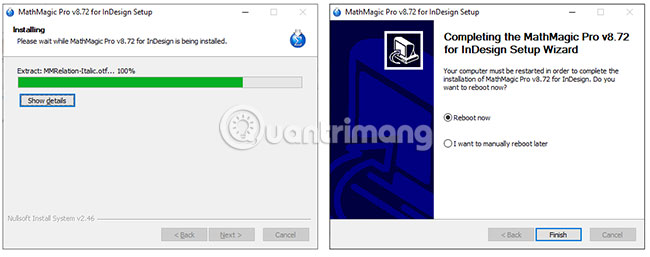
Step 2 : Double click on the executable file ( MathMagic Pro 8.72 InD.exe ) to install the program.
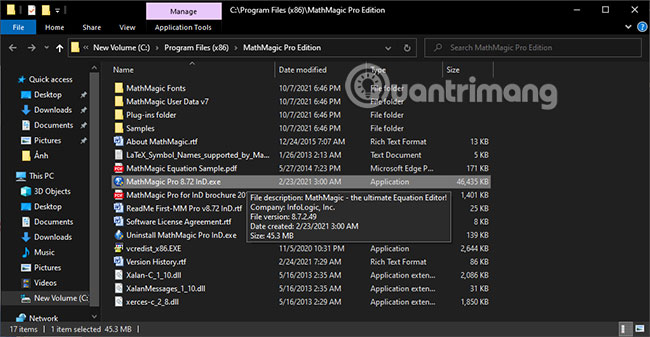
Step 3 : Open MathMagic Pro.

Step 4 : Enter the mathematical formula you want to write.
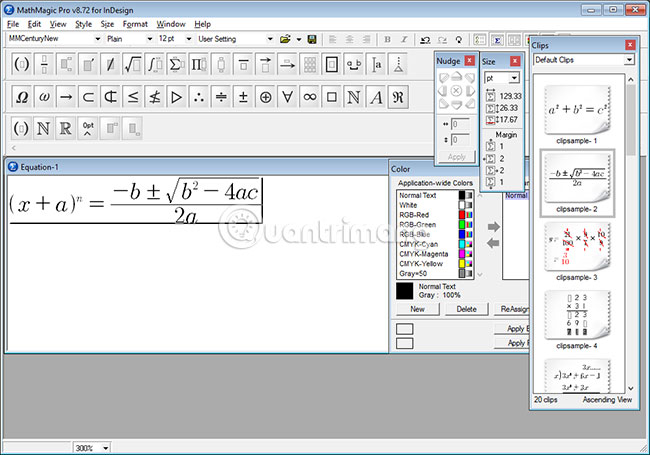
Step 5 : Copy the math formula you just created in MathMagic Pro.
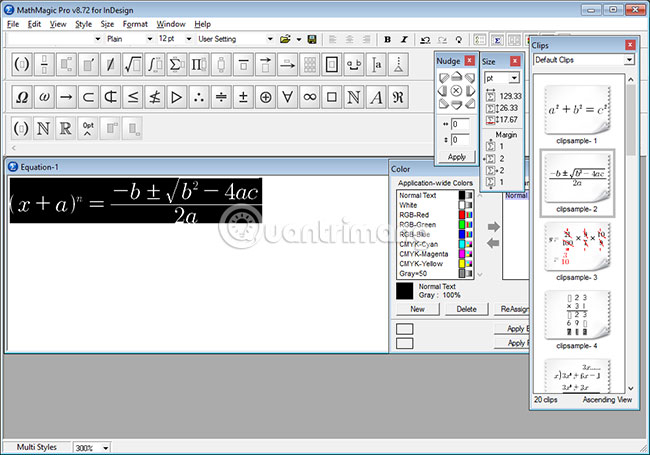
Step 6 : Paste the copied formula into the appropriate location in Word. You can move the position and adjust the size of the math formula as you like.

Write mathematical formulas with MathCast
MathCast is considered one of the best software for writing mathematical equations. This is an equation editor that allows you to enter mathematical equations for use in documents, emails, and websites. You can display equations graphically on your computer screen or in image and MathML files.
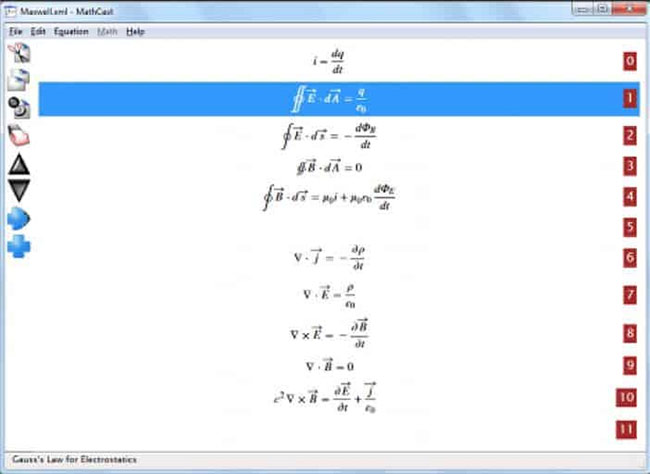
MathCast is free, open source and first released in 2004, featuring a powerful and user-friendly graphical interface for quickly developing mathematical equations.
Rapid Mathline is part of the intuitive and efficient MathCast interface, and supports a wide range of mathematical symbols, operators, and functions.
The software is also an equation list manager that can organize dozens of equations in a single list, allowing the ability to manage, modify, edit, view and re-edit all equations. math in a project, whether it's a website or a document, plus more, all in the same session.
Some basic features of MathCast include:
- Supports word processors like Microsoft Word, so you can insert into written documents such as equation tables, lab reports, research guides, and any other type
- Output support for image files such as BMP, PNG and EMF, you can combine these files in presentations and websites.
- Equations can be copied and pasted into email, webmail, and many other applications
- Features sharp rendering for on-screen reading and smooth rendering for high-quality printing
- Supports exporting equations to XML-based MathML
- MathCast provides a WYSIWYG tool to create XHTML web pages using mathematical equations
- You can work, learn, and teach with others, because the tool exposes the equation list as a persistent HTTP service, visible to browsers and many different instances on the network. .
How to write mathematical formulas with MathCast
Step 1: Install the MathCast program.
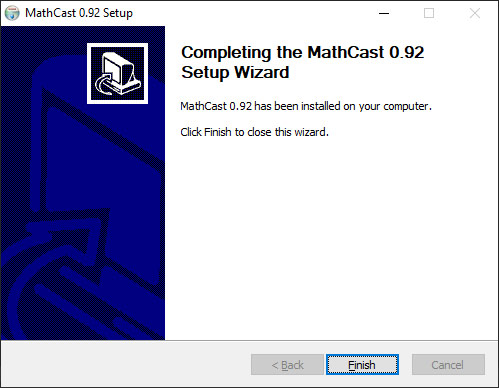
Step 2 : Double click the icon on the desktop to open the program.
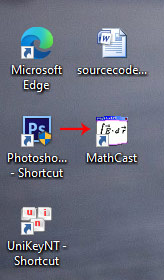
This is the main interface of MathCast.
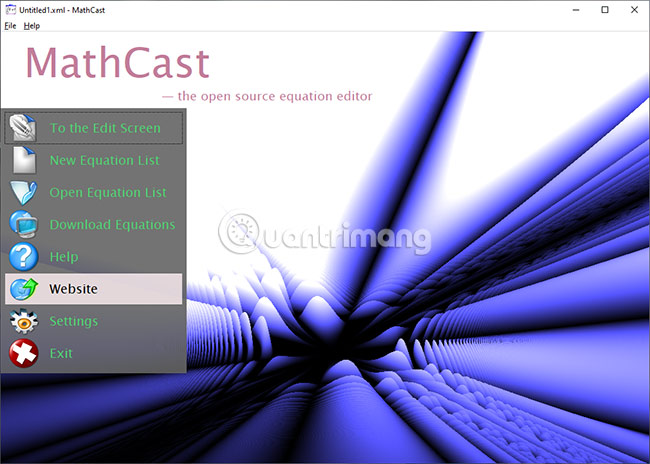
Step 3 : You will see support tools appear on the left hand side. Hover over each icon to see what the tool does.
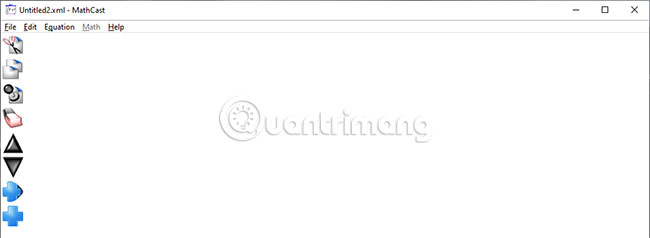
Step 4 : Click Insert Equation or Add Equation (last 2 icons) to add an equation.
Step 5 : Enter the desired equation then click OK.
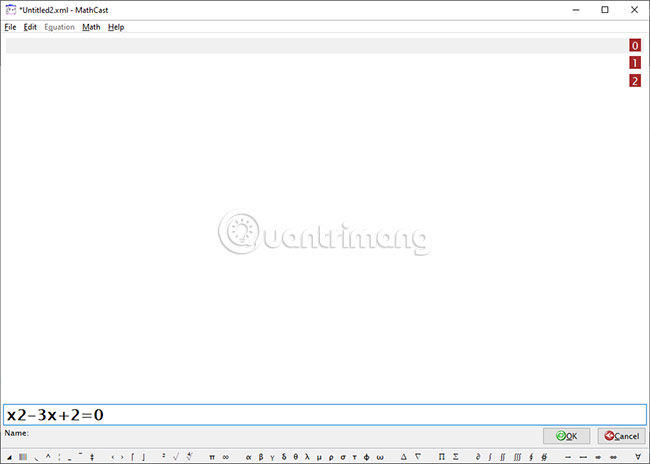
Equations will appear in the order entered.
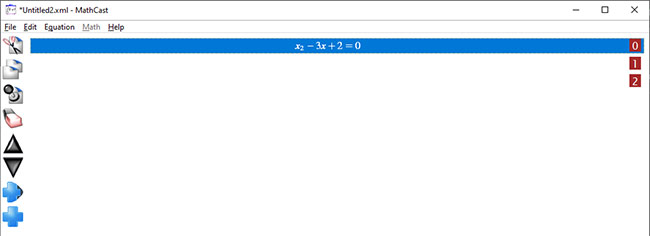
Step 6 : Continue doing the same with other equations.
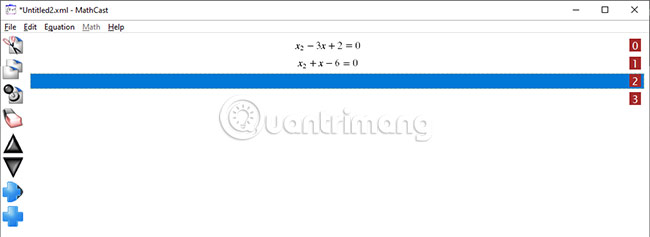
Step 7 : Right-click on the equation, select Copy and then paste into the Word document.
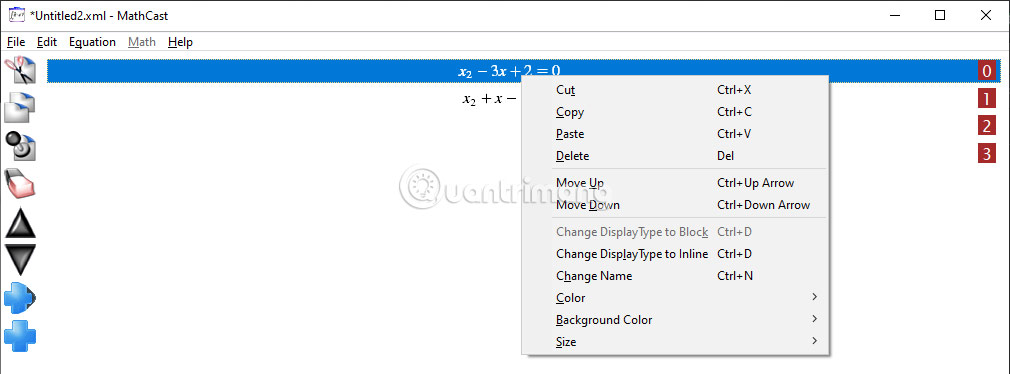
Write mathematical formulas with LyX
This is an open source document processor based on the LaTex typesetting system, which has a WYSIWYM (what you see is what you mean) approach so that what you see on the screen approximates what will be displayed. displayed on the page.
LyX is popular among technical writers and scientists for its advanced mathematical modes, but today the tool is being used increasingly by non-mathematical users, because features like the ability to manage multiple files and its directory database integration.
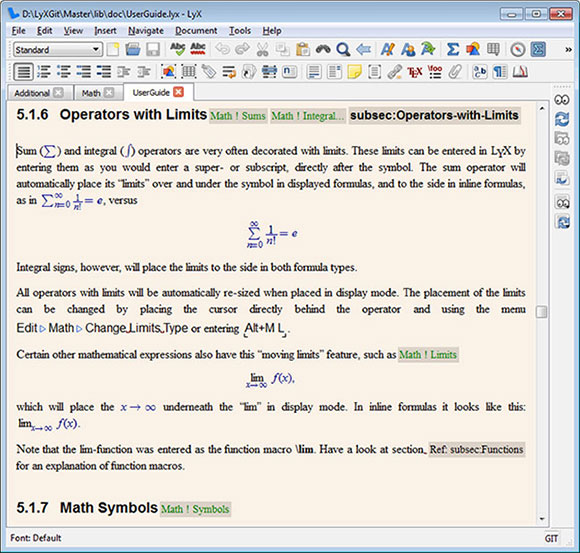
Features include a mathematical formula editor, copy/paste tools to and from LaTex source code, support for customizable mathematical macros, basic support for many computer algebra systems are different, and you can enter equations via a point-and-click interface or via the keyboard with LaTex commands.
LyX also has a structured way to create documents, advanced features for labels, references, indexes, and bibliographies, as well as standard word processing operations like cut/paste, redo/ undo, spell check, numbered section headings, table of contents, outline mode for easy navigation within the document, etc.
Other features include graphics and tables with support for multiple graphic formats, smart floating figures and tables, formatting and document writing support in many languages around the world.
The graphical user interface gives you access to all functions via menus and mouse, plus extensive documentation including multi-language beginner's guides, complete support text and typesetting in the background.
There are many more features this tool offers such as change tracking, golden notes, support for external version control systems like RCS, CVS, Git and many others, and speed It's fast and doesn't take up much computer memory.
Write mathematical formulas with MathJax
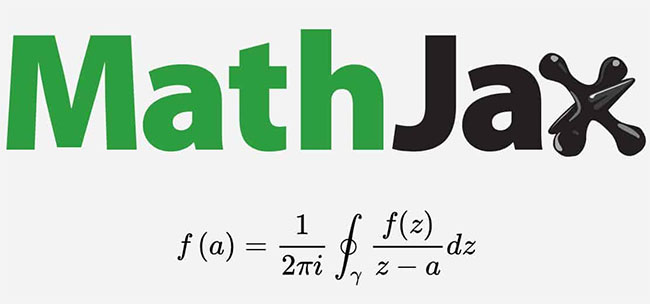
MathJax is the result of a collaboration between the American Mathematical Society and the Society for Industrial and Applied Mathematics (SIAM) to improve the quality of mathematics and science content on the web.
This is a JavaScript rendering engine for mathematics that works with all browsers without needing to set up a reader.
Features include high-quality typography, as it uses CSS with web fonts or SVG, instead of bitmap or Flash images, so equations can scale to fit the surrounding text in all zoom levels.
Additionally, MathJax is highly modular on input and output, so you can use MathML, TeX, and ASCIImath as input, then generate HTML + CSS, SVG, and MathML as output.
MathJax is also accessible and reusable because it is compatible with screen readers and offers zoom capabilities, plus you can copy equations into Office, LaTex, wikis, and more. .
Whether you are a casual user, someone who works regularly with math formulas, or even a professional developer, you can use MathJax. It has a rich API to help you create interactive content, advanced authoring tools, and math-enabled web and mobile apps.
Have you used any of the above tools to write mathematical equations? Let us know or share your experience with any of the software listed here by leaving a comment in the comments section below!
Wishing you success!
See more:
You should read it
- Insert and edit mathematical expressions in Word
- Create and edit mathematical expressions in Excel
- How to write fractions in Word - Instructions on how to write fractions in Word 2007, 2010, 2013, 2016
- Prepare and edit mathematical expressions in Word
- Instructions for inserting Math formulas in Word 2016
- MS Word - Lesson 9: Insert pictures, mathematical characters, especially on documents
- Three mathematical equations change the world
- How to insert Math expressions on Word 2007
May be interested
- How to write fractions on Word
 writing fractions on word will make it easier to represent the full magic.
writing fractions on word will make it easier to represent the full magic. - Word does not display Equation - Don't worry because there is a solution [100% EFFECTIVE]
![Word does not display Equation - Don't worry because there is a solution [100% EFFECTIVE]](https://tipsmake.com/img/no-image-80-80.png) word not showing equation makes you uncomfortable and even makes your work difficult because you cannot write mathematical formulas as needed?
word not showing equation makes you uncomfortable and even makes your work difficult because you cannot write mathematical formulas as needed? - How to insert Math expressions on Word 2007
 on word provides users with options to insert mathematical formulas and math expressions. we can adjust those formulas to be more standard with the content.
on word provides users with options to insert mathematical formulas and math expressions. we can adjust those formulas to be more standard with the content. - Typing Math formulas in Word 2016 is fast and easy
 word 2016 makes it easy for any user to create mathematical formulas. the following article shows you how to type math formulas in word 2016 very quickly.
word 2016 makes it easy for any user to create mathematical formulas. the following article shows you how to type math formulas in word 2016 very quickly. - How to write mathematical symbols in Canva
 canva supports users with design tools and more to create content, such as writing mathematical symbols for teaching or learning.
canva supports users with design tools and more to create content, such as writing mathematical symbols for teaching or learning. - Three mathematical equations change the world
 the bbc news agency opened a poll for readers about the most significant mathematical equations. here are the 3 most voted equations, they are the development premise of many science branches today.
the bbc news agency opened a poll for readers about the most significant mathematical equations. here are the 3 most voted equations, they are the development premise of many science branches today. - Ways to write math formulas in Microsoft Office
 if you have ever had to insert an equation, a mathematical formula in microsoft word, everyone will know that entering manually is not easy. the number of special characters involved and the complexity of proper formatting can make it difficult.
if you have ever had to insert an equation, a mathematical formula in microsoft word, everyone will know that entering manually is not easy. the number of special characters involved and the complexity of proper formatting can make it difficult. - The best mathematical formula drafting software - MathType
 the best mathematical formula drafting software - mathtype. entering mathematical formulas when drafting text has now become a common need. many editors have built-in features, such as microsoft word. however, entering the math formula on it is still quite difficult and time-consuming
the best mathematical formula drafting software - mathtype. entering mathematical formulas when drafting text has now become a common need. many editors have built-in features, such as microsoft word. however, entering the math formula on it is still quite difficult and time-consuming - How to write exponentials, square meters, cubic meters, index under chemical formulas in Word
 how to write exponentials, square meters, cubic meters, index under chemical formulas in word. in the process of using ms word for your work, you must use special characters such as exponents, square meters, cubic meters, or simply a chemical formula.
how to write exponentials, square meters, cubic meters, index under chemical formulas in word. in the process of using ms word for your work, you must use special characters such as exponents, square meters, cubic meters, or simply a chemical formula. - How to insert mathematical formulas, equations in Google Docs
 the equation editor in google docs is the perfect feature for users who often use mathematical formulas in their documents.
the equation editor in google docs is the perfect feature for users who often use mathematical formulas in their documents.

![Word does not display Equation - Don't worry because there is a solution [100% EFFECTIVE]](https://tipsmake.com/data6/thumbs_80x80/word-does-not-display-equation-dont-worry-because-there-is-a-solution-[100-effective]_thumbs_80x80_OgbOFGlBR.jpg)








 Will there be Snapdragon X Plus with 5G Modem for Windows?
Will there be Snapdragon X Plus with 5G Modem for Windows? These are applications that can block you from upgrading to Windows 11 24H2 version
These are applications that can block you from upgrading to Windows 11 24H2 version How to summarize YouTube videos using Gemini
How to summarize YouTube videos using Gemini Real-life photos of AMD Ryzen Zen 5 'Granite Ridge' CPU revealed
Real-life photos of AMD Ryzen Zen 5 'Granite Ridge' CPU revealed Google is again testing a new design for the search bar on Android
Google is again testing a new design for the search bar on Android Windows laptops are about to bring what MacBook users dream of
Windows laptops are about to bring what MacBook users dream of